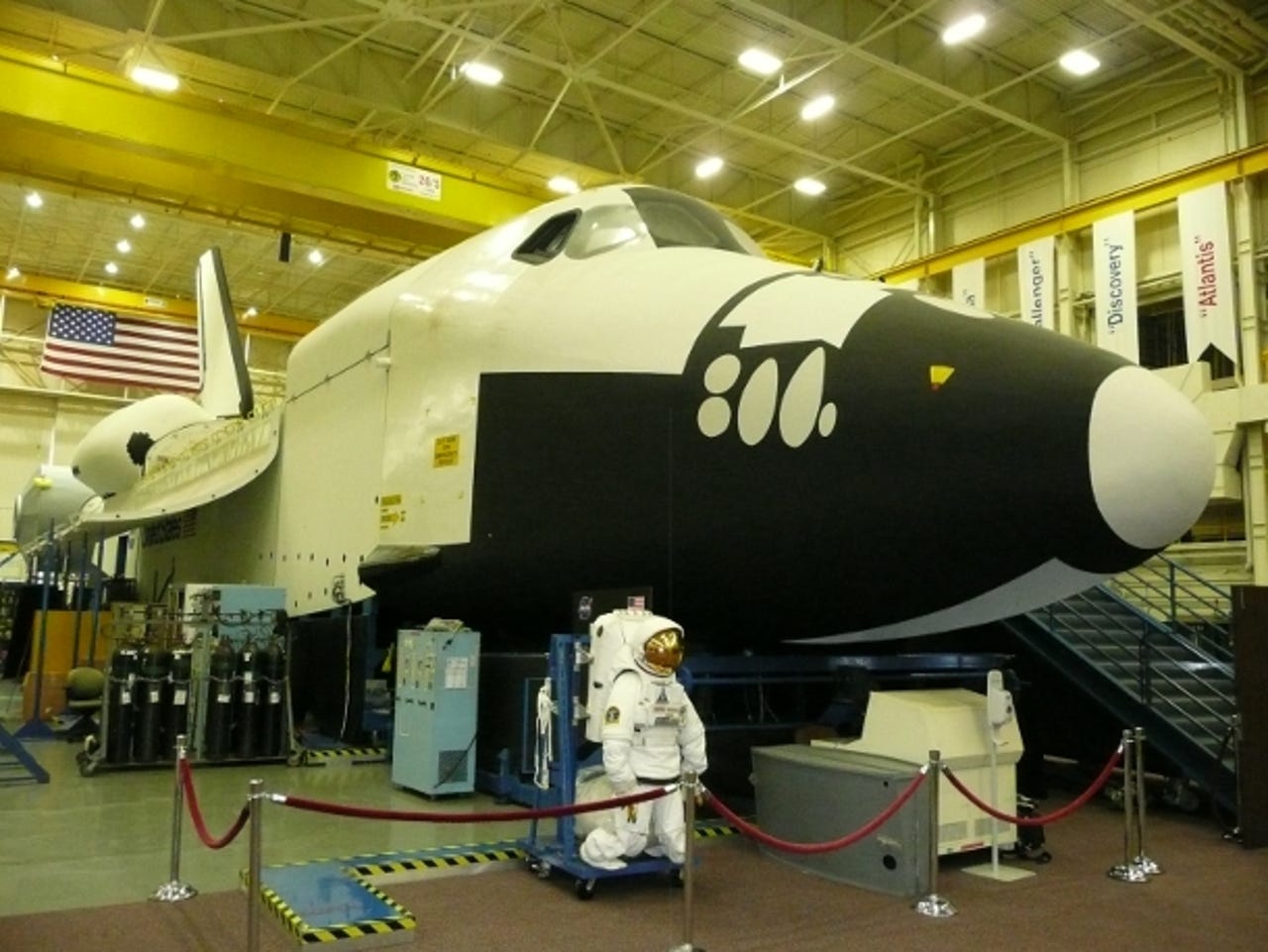Photos: Inside Nasa's Space Shuttle and the International Space Station


From the tech below deck to the robot helpers
Before blasting into orbit, Nasa astronauts get a taste of life on board spacecraft in this hangar-sized room.
The mock-up room at Johnson Space Center in Houston, Texas, contains models of Nasa and its partners' spacecraft - including the Space Shuttle seen here. Among the models are the International Space Station and the Orion craft that will carry Nasa astronauts after the Shuttle is retired.
Nasa uses the facility to train crew to navigate the spacecraft, carry out emergency drills and study the spacecraft's structure so that they will be able to carry out maintenance work.
As part of the training, astronauts also learn to access computers onboard the spacecraft in case they need to replace hardware.
Johnson Space Center has been home to mission control for Nasa space missions for more than 40 years, as silicon.com discovered during this tour of mission control through the ages.
A replica of one of the Shuttle's avionics computers tucked away inside the mid-deck.
This is the dashboard in the cockpit of the Space Shuttle model.
The dashboard here is a mock-up, with pictures of the various displays and dummy switches, knobs and sticks inside the Shuttle cockpit.
Astronauts learn to fly the shuttle using a computer simulator, situated elsewhere at Johnson Space Center, which includes screens that replicate cockpit displays and views of outer space through the Shuttle windows.
Since the Shuttle programme was launched in the 1970s, the Shuttle has only undergone a single major avionics computer systems upgrade.
Nasa has launched six Space Shuttles to date, three of which - Atlantis, Discovery and Endeavour - survive as space-faring vehicles today.
The windows in the rear of the cockpit allow the astronauts to look back into the Shuttle's payload bay, the large storage area where the Shuttle carries cargo for its mission.
From here the crew can control the Shuttle's robotic arm and manipulate cargo in the bay.
The Shuttle can also be piloted from the rear, allowing the crew to use the windows to manoeuvre the Shuttle into position when it is docking with the International Space Station (ISS).
Nasa's Shuttles have played a vital role in the construction of the ISS, carrying many of the modules used to build the station into orbit and ferrying crew.
Robonaut 2 will be installed as a robot helper in the Leonardo Permanent Multipurpose Module in the International Space Station, and is due to be delivered to the station by the Shuttle next month.
Nasa is also examining ways that Robonaut 2 could be made mobile, such as fitting the robot to a wheeled chassis, shown here.
In the long term Robonaut 2 may also be used to assist astronauts on maintenance tasks outside spacecraft.
Another option being considered by Nasa to allow Robonaut to negotiate tricky terrain is to fit the robot to this spider leg chassis.
The exterior of a model of the Orion crew exploration vehicle that will carry Nasa astronauts on missions into space after the Shuttle is retired.
Orion will rely on sophisticated computer hardware and software to automate many of the tasks that currently have to be carried out by the Shuttle crew or mission control.
The Ares I rocket will carry the Orion craft into orbit, where it will then be able to use its own propulsion system to travel deeper into space.
With the capsule capable of supporting a lunar mission lasting up to six months, Nasa hopes to use it to take a human crew to the moon by 2020.
The interior of the Orion capsule is 16.5 feet in diameter, with room for between four and six crew members.
The capsule mock-up allows its designers at Lockheed Martin to put people inside it and work out the best configuration for internal fittings, such as the seat and control panels, by examining how astronauts use the capsule and where they need more space.
This is a replica of the International Space Station's Quest Joint Airlock, the main airlock used by the astronauts to exit the space station on spacewalks.
Astronauts leave the airlock through the narrow cylinder, which is so tight that astronauts have to lie down head to toe to get out.
While at Johnson Space Center, silicon.com spoke to astronaut Clayton Anderson about how astronauts use technology on board the ISS.
A view through a hatch looking down the length of the International Space Station model.
This shot looks through many different parts of the station - including the main US lab, a Russian storage module and the Russian Zvezda service module.
The model hatch seen here weighs just 17lb, a fraction of the 100lb-plus that the actual space station hatch would weigh on the ground.
However, in orbit the hatch weighs far less because of the station's zero gravity, making the hatches comparatively easy to open.
A view from the other end of the ISS mock-up - this time taken from within the Zvezda service module.
The service module was the first Russian contribution to the building of the ISS and has served as living quarters, as well as having housed life support, electrical power distribution, data processing, flight control and propulsion systems for the station.
This is an exterior shot of the replica of the Unity Node One module of the International Space Station.
It connects the work and living areas and was the first major US-built component of the station.
This is a terminal where a Nasa training instructor monitors the crew inside the space station mock-up using a CCTV display.
The instructor is able to see how trainees cope with simulations of emergencies, such as depressurisation or smoke inside the cabin.
An exterior shot of a model of Soyuz - the venerable Russian spacecraft that is used to carry crew and equipment to and from the International Space Station.
A shot of the interior of the Soyuz spacecraft mock-up.
A concept design for a rover to transport astronauts during a future mission to the moon or Mars.
For tricky terrain, the vehicle's wheels can be twisted to allow it to move sideways or it can raise itself up to get over obstacles.
Nasa is considering modifying the vehicle to allow it to create a drivable road as it moves - either by adding a blade to smooth out the terrain or a microwave emitter to fuse dust on the Martian landscape into glass.
Spacesuits are stored on the back of the rover, where they lock into an airtight seal with the rover cabin.
The rover is designed so that astronauts will be able to climb out of a hatch in the back of the cabin straight into the spacesuit.
The hatch door to the suit will close behind the astronaut, so none of the dust from the surface - which can be harmful to humans and equipment - gets inside the rover.